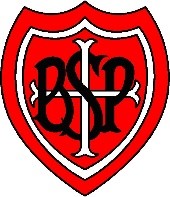Our Churches
As a school we link directly with two churches - St Barnabas and St Philip's.
Please see below for further information regarding our links.
St Barnabas
In 1825 nearly all present Kensington was one parish with its church, St. Mary Abbots, in the village clustered round the junction of Kensington Church Street and Kensington High Street. Hitherto there had been no more than farms, nursery gardens and family estates round it, but housing developments were spreading some distance from the church and two daughter churches were built, St Barnabas to serve the West and Holy Trinity Brompton the East.
St Barnabas prospered until the early 1980s, when the congregation had dwindled and closure was envisaged. Instead, Revd John Irvine came from Holy Trinity Brompton with a group of 100 to revitalise the church's life and worship. A more informal, contemporary style of worship was introduced and courses such as Alpha were started. This began to draw a large number of young adults who brought their friends many of whom became Christians and formed part of the growing, gathered congregation.
Today St Barnabas is a church of about 300 adults and 90 children. There is a genuine mix of social and ethnic backgrounds with over 35 nations represented among the three congregations, reflecting this diverse part of West London.
We enjoy a very strong and positive relationship with St Barnabas Church, The Reverand, Andy Buckler, and other church staff visit the school every week and lead acts of worship. Special celebrations are held at the church several times each year; classes visit the church for lessons on topics such as Baptism, Holy Communion, vestments and church buildings.
The Reverand of St Barnabas is an ex-officio member of the governors of St Barnabas and St Philip's, making a valuable contribution to the life of the school.
St Philip's
The church of St Philip’s dates from 1857, when the Vicar of St Barnabas in Addison Road obtained permission to build a new church in what was then the village of Earl’s Court to accommodate his growing parish.
In 1858 the new church was consecrated by the Bishop of London on 1 May, St Philip’s Day. Joseph Claxton, the Curate at St Barnabas, was the first vicar and served until his death in 1877. The Rev Claxton also provided £5,000 towards the cost of the new church. The remaining £1,500 was raised by public subscription.
The church’s most notable external feature is probably its clock. A local landmark, it was added in 1883 and has now been restored to full working order.
St Philip’s suffered some damage during aerial bombing of London in 1940, including the destruction of several of its stained glass windows. These were restored and repaired in the years following World War II.
A service to mark the church’s centenary was held on the Feast of St Philip, 1958. This was attended by, among others, the Bishops of Kensington and Southwark, and Henry, Bishop of London.
Major building work to renovate the church began in 2002 under the leadership of the vicar, Michael Forrest. The church remained open during the 18 months of restoration work. Services were held in what is now the lower hall, despite having no heat, very little lighting and, indeed, no floorboards at certain stages of the rebuilding.
As with St Barnabas', we enjoy a very strong and positive relationship with St Philip's, The Reverand, Pippa Turner, and other church staff visit the school every week and lead acts of worship. Special celebrations are held at the church several times each year; classes visit the church for lessons on topics such as Baptism, Holy Communion, vestments and church buildings.
The vicar of St Philip's is an ex-officio member of the governors of St Barnabas and St Philip's, making a valuable contribution to the life of the school.
